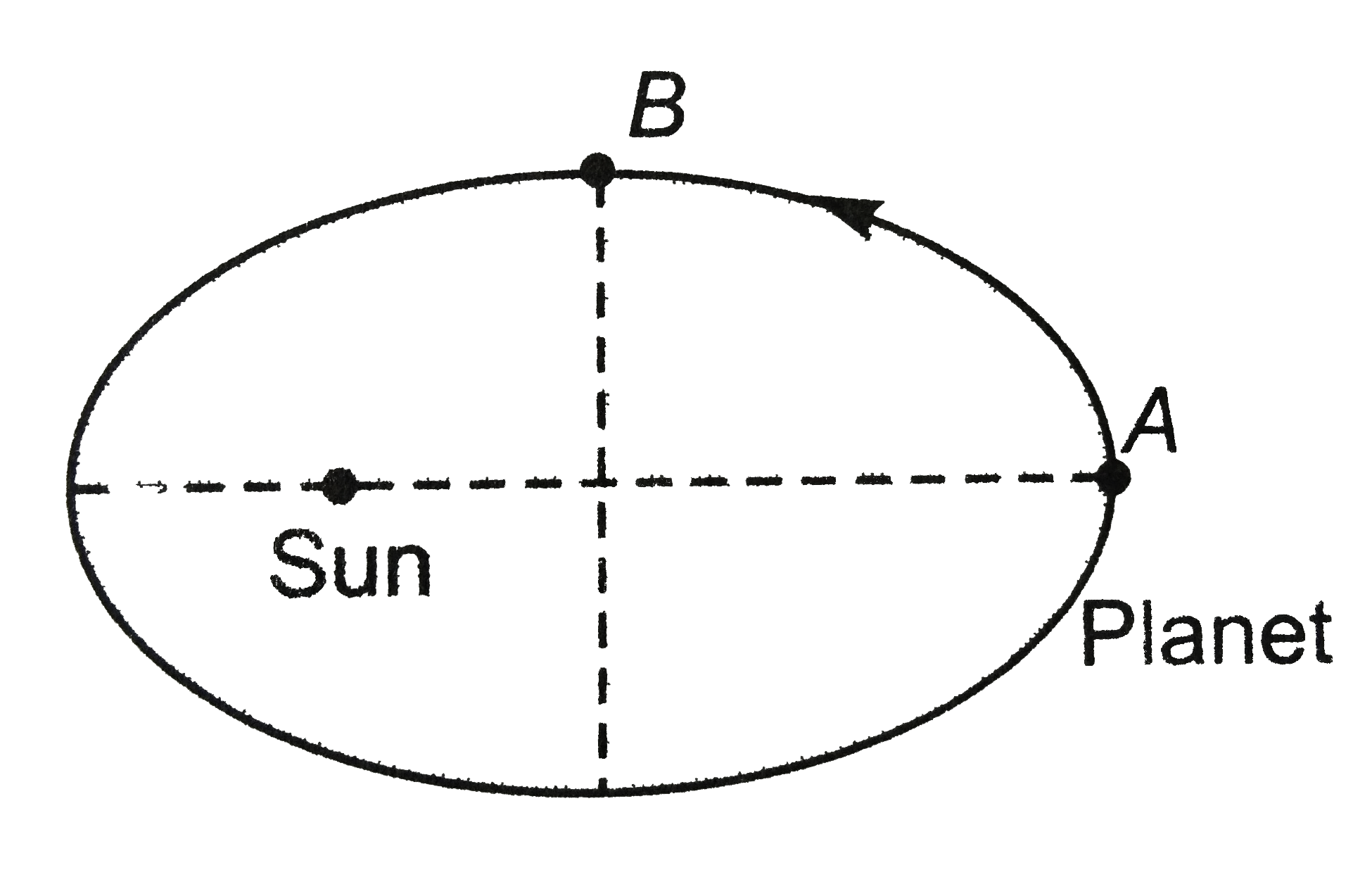Kepler's law starts that square of the time period of any planet moving around the sun in an elliptical orbit of semi-major axis (R) is directly proportional to
R
1R
R3
1R3
The correct Answer is:C
To solve the question regarding Kepler's law, we will analyze the relationship between the time period of a planet and the semi-major axis of its elliptical orbit.
1. Understanding Kepler's Third Law:
Kepler's Third Law states that the square of the orbital period (T) of a planet is directly proportional to the cube of the semi-major axis (R) of its orbit. This can be mathematically expressed as:
T2∝R3
2. Expressing the Proportionality as an Equation:
To convert the proportionality into an equation, we introduce a constant of proportionality (k):
T2=k⋅R3
where k is a constant that depends on the gravitational parameter of the central body (in this case, the Sun).
3. Interpreting the Relationship:
This equation indicates that if you know the semi-major axis (R) of a planet's orbit, you can calculate the square of its orbital period (T) by multiplying R3 by the constant k.
4. Conclusion:
Therefore, the answer to the question is that the square of the time period of any planet moving around the Sun in an elliptical orbit is directly proportional to the cube of the semi-major axis of its orbit:
T2∝R3
Final Answer:
The square of the time period (T²) of any planet is directly proportional to the cube of the semi-major axis (R³) of its orbit.
---
Kepler's Third Law states that the square of the orbital period (T) of a planet is directly proportional to the cube of the semi-major axis (R) of its orbit. This can be mathematically expressed as:
T2∝R3
To convert the proportionality into an equation, we introduce a constant of proportionality (k):
T2=k⋅R3
where k is a constant that depends on the gravitational parameter of the central body (in this case, the Sun).
This equation indicates that if you know the semi-major axis (R) of a planet's orbit, you can calculate the square of its orbital period (T) by multiplying R3 by the constant k.
Therefore, the answer to the question is that the square of the time period of any planet moving around the Sun in an elliptical orbit is directly proportional to the cube of the semi-major axis of its orbit:
T2∝R3
The square of the time period (T²) of any planet is directly proportional to the cube of the semi-major axis (R³) of its orbit.
Topper's Solved these Questions
- GRAVITATIONBook:DC PANDEY ENGLISHChapter:GRAVITATIONExercise:Check Point 10.2
Explore 20 Videos
- GRAVITATIONBook:DC PANDEY ENGLISHChapter:GRAVITATIONExercise:Check Point 10.3
Explore 15 Videos
- GRAVITATIONBook:DC PANDEY ENGLISHChapter:GRAVITATIONExercise:Level 2 Subjective
Explore 14 Videos
- GENERAL PHYSICSBook:DC PANDEY ENGLISHChapter:GENERAL PHYSICSExercise:INTEGER_TYPE
Explore 2 Videos
- KINEMATICSBook:DC PANDEY ENGLISHChapter:KINEMATICSExercise:INTEGER_TYPE
Explore 10 Videos
Similar Questions
Consider a planet moving around a star in an elliptical orbit with period T. Area of elliptical orbit is proportional to
View SolutionA planet is moving round the sun in an elliptical orbit as shows. As the planet moves from A to B

View SolutionFor a planet revolving around Sun in an elliptical orbit, to obtain its velocity at any point we have to apply
View SolutionAssertion : For circular orbits, the law of periods is T2∝r3, where M is the mass of sun and r is the radius of orbit.
Reason : The square of the period T of any planet about the sum is proportional to the cube of the semi-major axis a of the orbit.
View SolutionConsider that the Earth is revolving around the Sun in a circular orbit with a period T. The area of the circular orbit is directly proportional to
View SolutionKepler's third law states that square of period revolution (T) of a planet around the sun is proportional to third power of average distance i between sun and planet i.e. T2=Kr3
here K is constant
if the mass of sun and planet are M and m respectively then as per Newton's law of gravitational the force of alteaction between them is F=GMmr2, here G is gravitational constant. The relation between G and K is described as
View SolutionUsing the conservation laws, demonstrate that the total mechanical energy of a planet of mass m moving around the Sun along an ellipse depends only on its semi-major axis a. Find this energy as a function of a.
View SolutionFollowing physical quantity is constant where a planet that revolves around Sun in an elliptical orbit.
View SolutionWhich of the following statements are correct about a satellite moving around a planet in an elliptical orbit ?
View SolutionSpeed of a planet in an ellioptical orbit with semimajor axis a about sun of mass M at a distance r from sun is
View Solution